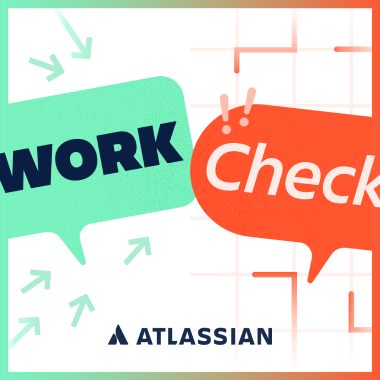In today’s rapidly evolving work environment, marked by remote teams and the rise of AI, the need for effective leadership has never been greater. Despite all the technological advancements, many organizations are struggling with inefficiency, burnout, and disengagement. While we are more physically connected than ever, the emotional disconnect between purpose and day-to-day work is widening, leaving employees feeling isolated and overwhelmed.
This problem is not just a passing trend – it’s a systemic issue. According to Atlassian’s State of Teams report, Fortune 500 companies lose 25 billion work hours each year due to ineffective collaboration. The Gallup State of the Global Workforce report shows that in 2023 alone, global GDP lost $8.9 trillion due to low employee engagement. And at the individual level, only 34% of workers felt they were thriving, while 52% were actively seeking new jobs.
These statistics highlight a critical need: strong, purpose-driven leadership is essential to help bridge the gap between what we do and why we do it. And leadership isn’t just for those at the top – it’s something every individual can cultivate. Whether you’re managing a team of thousands or leading your own life, the ability to inspire, connect, and align with purpose is more crucial than ever. By becoming better leaders, we can empower ourselves and those around us to be more engaged, resilient, and effective in our work.
A framework for better leadership
Leadership can be taught – with the right tools and a willingness to learn – by asking the right questions, focusing on purpose, and creating systems that foster collaboration and well-being. This is where the concept of Connected Leadership comes in – a framework I developed over decades of leading, coaching, and teaching, including at Yale University. Connected Leadership links our deeper purpose to our progress, while helping us connect as individuals to our teams, communities, and the world we share. These principles are now accessible to a broader audience through a Coursera course in partnership with Yale’s Center for Business and the Environment and the Poorvu Center for Teaching & Learning. Everyone has the potential to lead and drive positive change – within their teams, organizations, and beyond. In a world of rapid change, leadership is the key to creating meaningful, lasting impact.

The Connected Leadership Framework: The 4 Ps
The Connected Leadership Framework centers around four core concepts I call the “4 Ps”: Purpose, Priorities, Potential, and Progress. I’ve found that each of these four elements offers a lens through which we can think of our work and how it aligns to our goals. Let’s break down each “P” and explore how they can help you lead more effectively.
1. Purpose
You perform at your best when you know why you’re here and how your work connects to something bigger. Questioning and confirming your purpose starts with reflection. Try asking yourself the following questions:
- What key choices have shaped your path to this moment? What skills and values did you bring to this point?
- Where are you heading? What do you want being the older you to feel like?
- What causes you to be in a flow state? What makes your life worth living?
By reflecting on these questions, you’ll gain clarity about your personal and professional purpose (and a free worksheet is here).
2. Priorities
Once you’ve identified your purpose, it’s time to get clear on your priorities. What are the most important areas you should focus on? I’m an enthusiastic fan of the old story about the “jar of life” filled with “rocks,” “pebbles,” and “sand’ in the order you choose. If you decide on the really big things in life first – the “rocks” – and carve out time for them before items of lesser importance (the “pebbles” and “sand”), then they all fit in. The pebbles and sand fit around the bulk of the rocks.
Deciding on the top three to five areas that really matter most for you to spend time on is critical for a life of meaningful progress on what matters. Much of my coaching and teaching time to leaders at all levels is devoted to exploring and clarifying these key priorities, across life as well as work.
3. Potential
For each priority you’re excited about, think about what success would look like a year from now. What skills do you need to develop? What experiences should you pursue? What milestones will show you’re making progress?
When you picture your potential across all the big areas of your life, I suggest setting goals that are worth celebrating – goals you’ll be proud to raise a glass to when you achieve them. These should be goals you can measure, both in terms of numbers and in the more personal, meaningful ways that reflect your growth across all the important parts of your life. Imagine the power of attaching meaningful target numbers to, for example, family and health (areas of life that could get squeezed or taken for granted) while also pursuing softer, more qualitative goals at work (such as savoring unsolicited testimonials or enjoying post-project down-time with colleagues). In short, how could you create goals that are both inspiring to you and help you create balance?
4. Progress
The final step is translating purpose and priorities into actionable steps. Where are you now, and what’s your path forward? The progress piece is all about creating a bridge between where you are and where you want to be. When you distill your goals into a clear, concise plan, you not only internalize them, but also make it easier to communicate them to your team. From the coaching and teaching experience, I have always appreciated the positive impact of articulating all the important components of holding yourself accountable to progress on one page. “Life on one page” can be done; indeed, I would argue it is the way to get what you really want accomplished.
How a Connected Leader inspires a more connected workforce
I see the Connected Leadership Framework as simple but powerful scaffolding, supporting you as the master-builder-creator of your life. The tools are simple and allow you to build with both hands, but the complexity is in the building itself. I am confident that by continually questioning and updating your “4 Ps,” you can live more aligned with your goals both at work and in life. Here’s why:
- Personal growth: When you align your work with your purpose, you’ll find a deeper sense of meaning in everything you do.
- Efficiency: Clearly written priorities allow you to focus on what really matters, improving both your productivity and job satisfaction.
- Team success: When everyone on a team applies the 4 Ps, collaboration can strengthen, and team alignment improves, leading to better results.
- Organizational impact: A team full of connected leaders doesn’t just work better together – they unlock the potential to reshape their organization and the wider world for the better.
Ready to become a Connected Leader?
Use the simple 4-page, 4-P template here and start working through your personal and professional goals. Even better, try the exercise with a colleague or your manager. You’ll not only gain clarity for yourself, but also enhance your team’s alignment and productivity.
For more insights on how to become a Connected Leader, please check out our free course and full 50-page workbook.





 )
) 







































